Abstract
The antibacterial activities of ceftazidime and netilmicin were studied in a two-compartment in vitro model. Pseudomonas aeruginosa cultures were exposed to changing drug concentrations that mimic human pharmacokinetics. Netilmicin alone reduced the numbers of organisms in cultures of the susceptible strains by more than 99% within 4 h; however, regrowth occurred after 8 h. Although ceftazidime alone killed more slowly than netilmicin, only one of the five strains regrew within 28 h. When both drugs were combined, rapid initial killing occurred without subsequent regrowth. Studied after 24 h in combination with ceftazidime, netilmicin was as effective when given as a single daily dose as when administered in three daily doses that provided 50% more aminoglycoside per day. Decreased bacterial susceptibility was seen after ceftazidime exposure for one strain and after netilmicin exposure for all originally netilmicin-susceptible strains. No such reduction in susceptibility was observed during exposure to the combination. The results of standard in vitro checkerboard tests for synergism were predictive of the initial (4 to 8 h) but not the final (24 to 28 h) assessment of drug interaction in the pharmacokinetic model.
Full text
PDF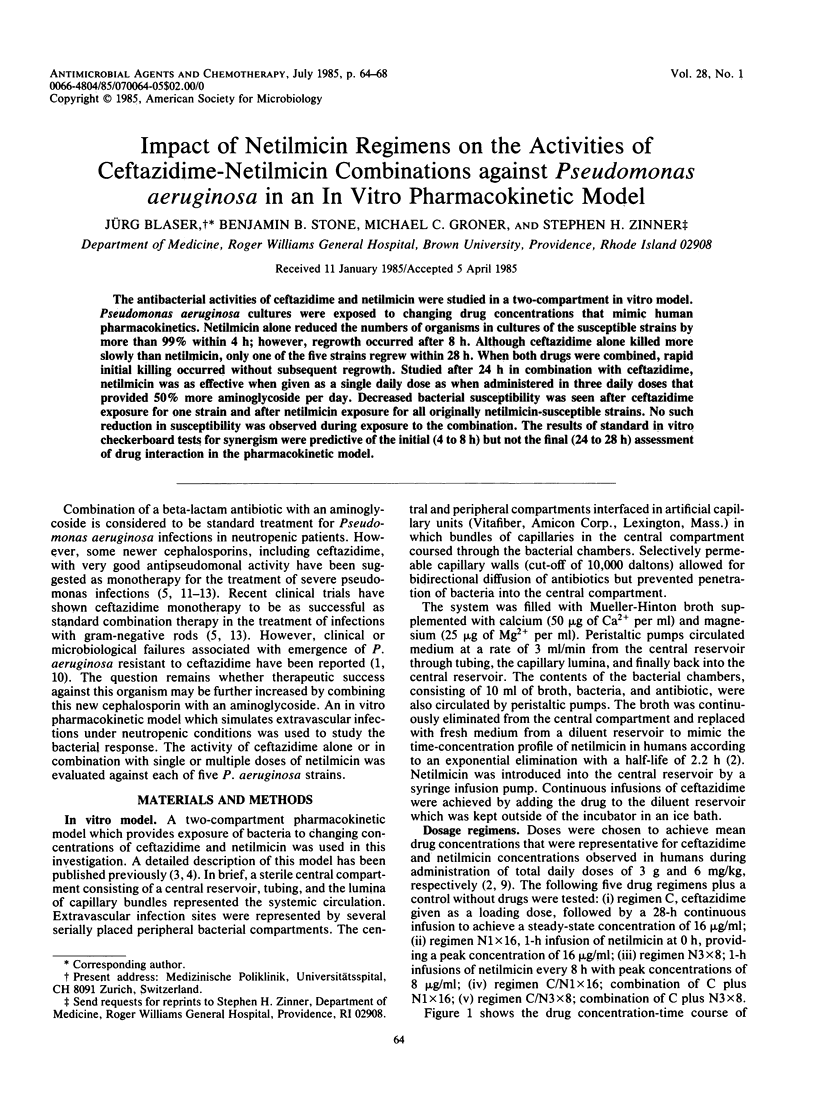
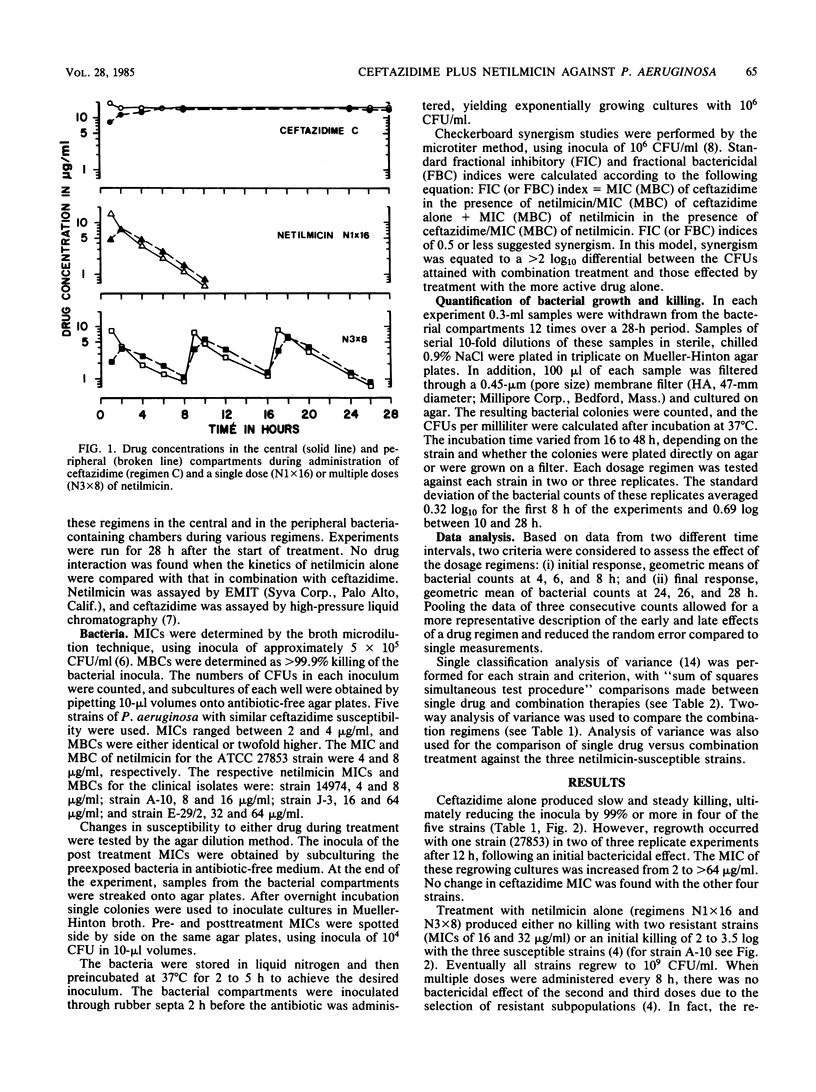
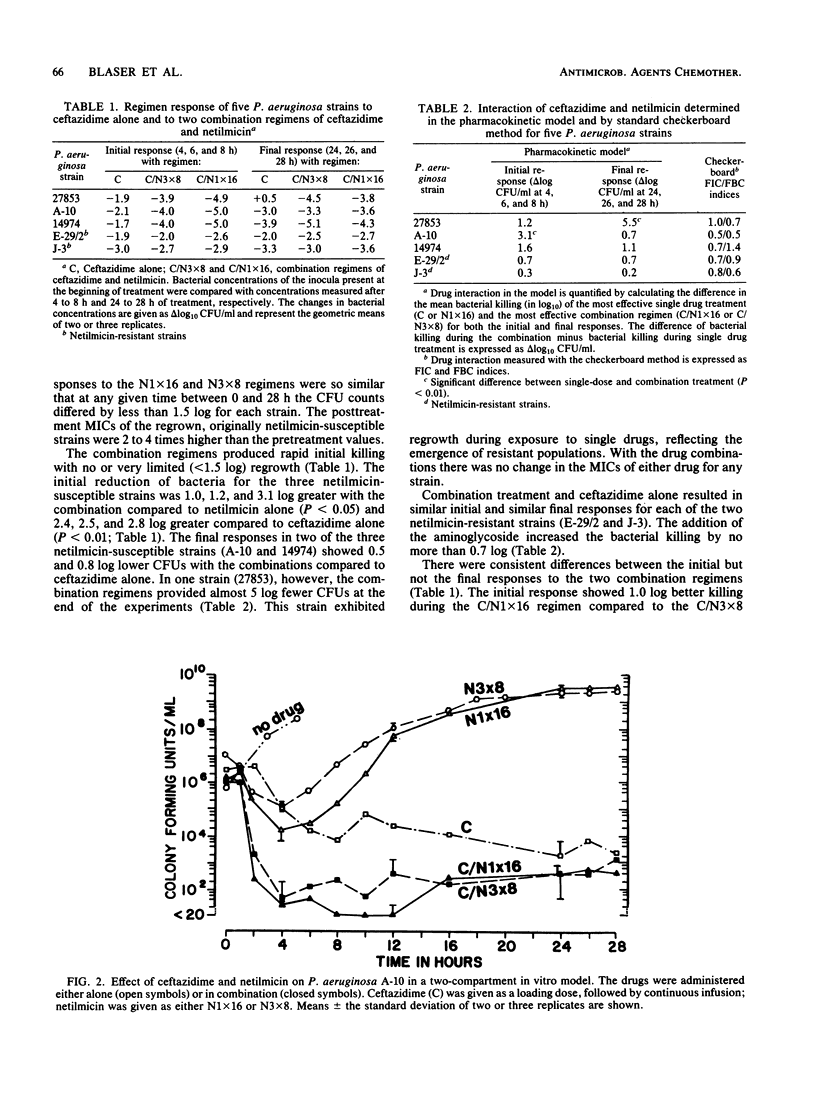
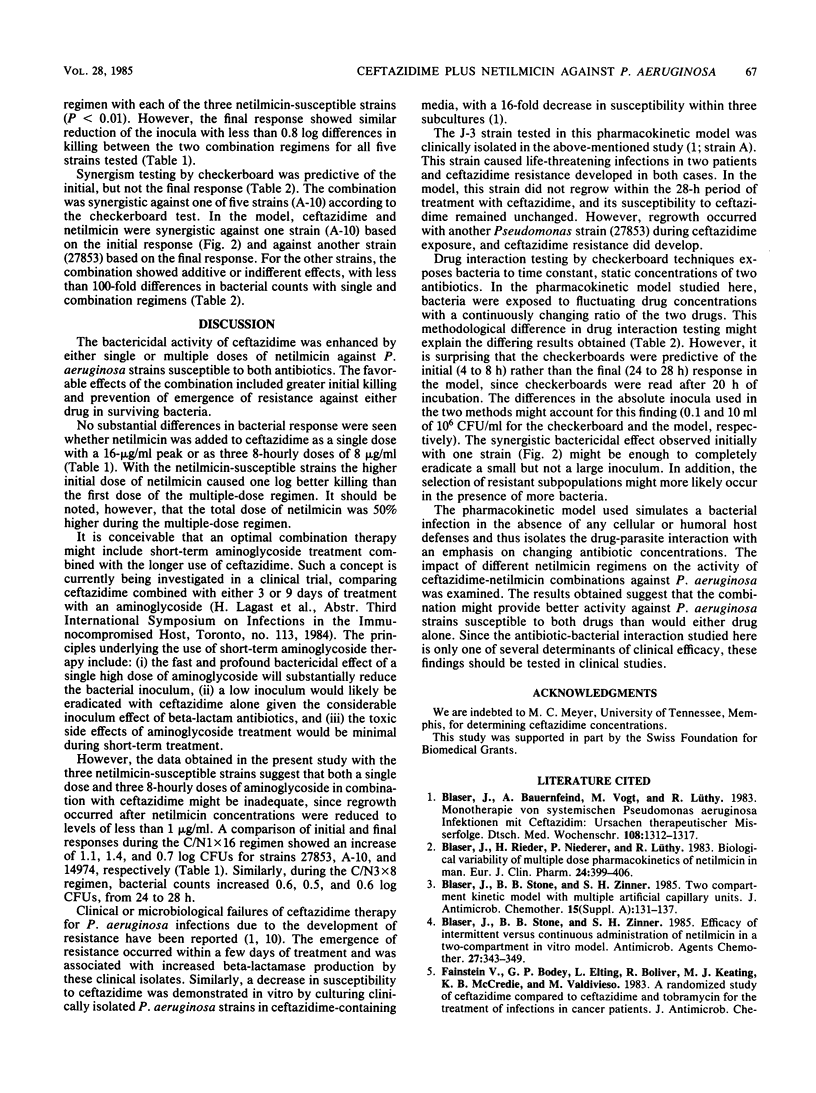
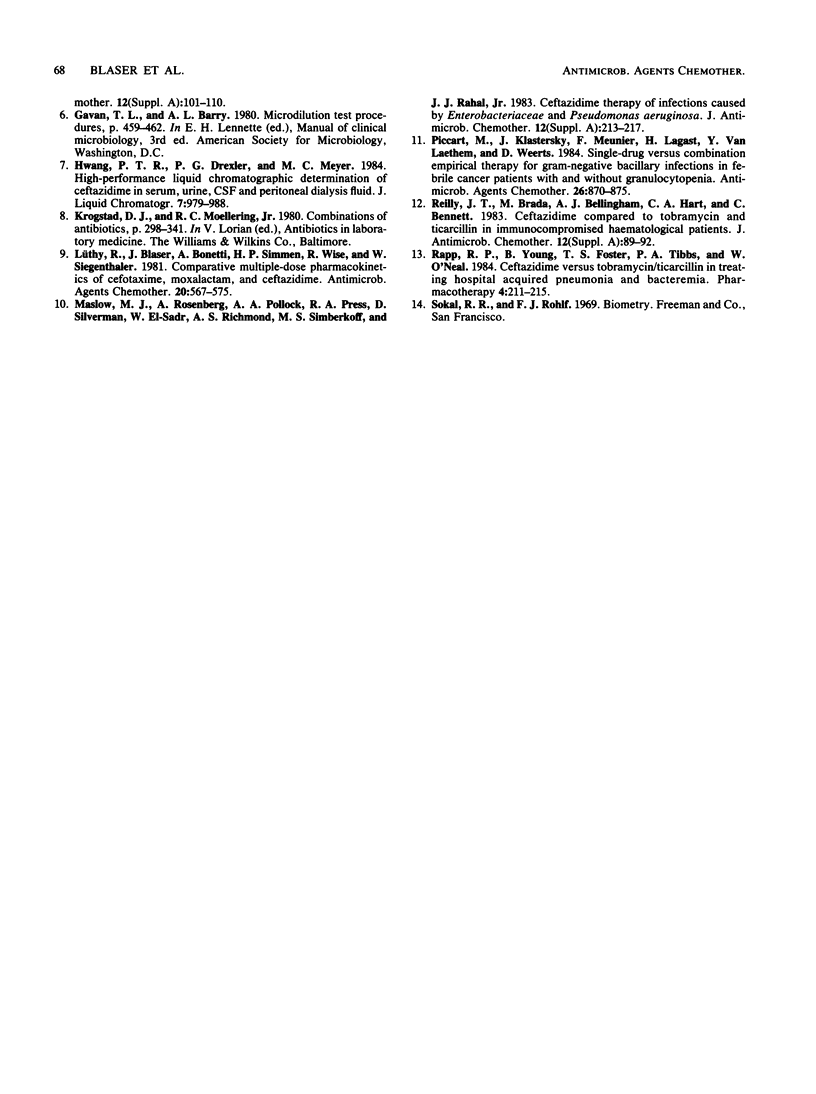
Selected References
These references are in PubMed. This may not be the complete list of references from this article.
- Blaser J., Bauernfeind A., Vogt M., Lüthy R. Monotherapie von systemischen Pseudomonas-aeruginosa-Infektionen mit Ceftazidim. Ursachen therapeutischer Misserfolge. Dtsch Med Wochenschr. 1983 Sep 2;108(35):1312–1317. doi: 10.1055/s-2008-1069742. [DOI] [PubMed] [Google Scholar]
- Blaser J., Rieder H., Niederer P., Lüthy R. Biological variability of multiple dose pharmacokinetics of netilmicin in man. Eur J Clin Pharmacol. 1983;24(3):399–406. doi: 10.1007/BF00610062. [DOI] [PubMed] [Google Scholar]
- Blaser J., Stone B. B., Zinner S. H. Efficacy of intermittent versus continuous administration of netilmicin in a two-compartment in vitro model. Antimicrob Agents Chemother. 1985 Mar;27(3):343–349. doi: 10.1128/aac.27.3.343. [DOI] [PMC free article] [PubMed] [Google Scholar]
- Blaser J., Stone B. B., Zinner S. H. Two compartment kinetic model with multiple artificial capillary units. J Antimicrob Chemother. 1985 Jan;15 (Suppl A):131–137. doi: 10.1093/jac/15.suppl_a.131. [DOI] [PubMed] [Google Scholar]
- Lüthy R., Blaser J., Bonetti A., Simmen H., Wise R., Siegenthaler W. Comparative multiple-dose pharmacokinetics of cefotaxime, moxalactam, and ceftazidime. Antimicrob Agents Chemother. 1981 Nov;20(5):567–575. doi: 10.1128/aac.20.5.567. [DOI] [PMC free article] [PubMed] [Google Scholar]
- Maslow M. J., Rosenberg A., Pollock A. A., Press R. A., Silverman D., El-Sadr W., Richmond A. S., Simberkoff M. S., Rahal J. J., Jr Ceftazidime therapy of infections caused by Enterobacteriaceae and Pseudomonas aeruginosa. J Antimicrob Chemother. 1983 Jul;12 (Suppl A):213–217. doi: 10.1093/jac/12.suppl_a.213. [DOI] [PubMed] [Google Scholar]
- Piccart M., Klastersky J., Meunier F., Lagast H., Van Laethem Y., Weerts D. Single-drug versus combination empirical therapy for gram-negative bacillary infections in febrile cancer patients with and without granulocytopenia. Antimicrob Agents Chemother. 1984 Dec;26(6):870–875. doi: 10.1128/aac.26.6.870. [DOI] [PMC free article] [PubMed] [Google Scholar]
- Rapp R. P., Young B., Foster T. S., Tibbs P. A., O'Neal W. Ceftazidime versus tobramycin/ticarcillin in treating hospital acquired pneumonia and bacteremia. Pharmacotherapy. 1984 Jul-Aug;4(4):211–215. doi: 10.1002/j.1875-9114.1984.tb03360.x. [DOI] [PubMed] [Google Scholar]
- Reilly J. T., Brada M., Bellingham A. J., Hart C. A., Bennet C. Ceftazidime compared to tobramycin and ticarcillin in immunocompromised haematological patients. J Antimicrob Chemother. 1983 Jul;12 (Suppl A):89–92. doi: 10.1093/jac/12.suppl_a.89. [DOI] [PubMed] [Google Scholar]


